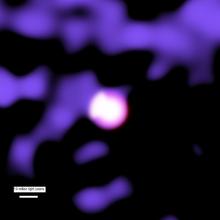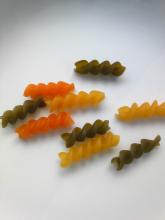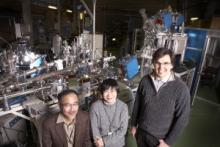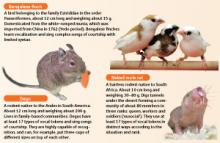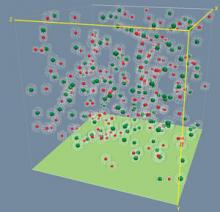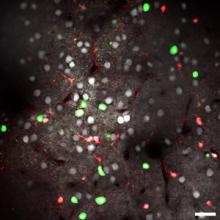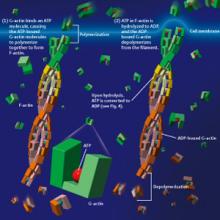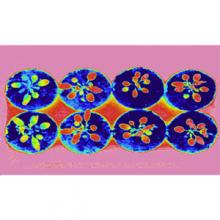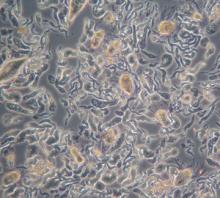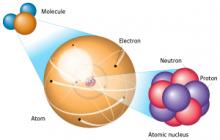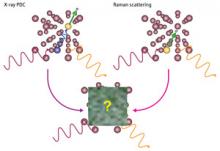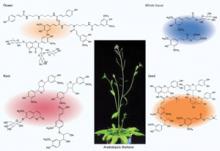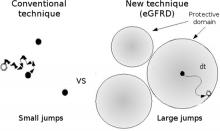Japan
News

09 Apr 2010
Laura Gainche writes to Katsuhiko Mikoshiba at the Laboratory of
Developmental Neurobiology, RIKEN Brain Science Institute

09 Apr 2010
A global organization dedicated to advancing science around the world, the American Association for the Advancement of Science (AAAS) attracts thousands of leading scientists, engineers and educators to its annual meeting every year.

09 Apr 2010
Spontaneous rotating movements cause growing nerve fibers to turn to the right

09 Apr 2010
The structure of a key membrane protein expressed in red blood cells could reveal how oxygen supply to tissues is regulated
07 Apr 2010
A team headed by researchers at RIKEN and the Academia Sinica Institute of Astronomy and Astrophysics has uncovered details explaining the growth of galaxy clusters, the largest gravitationally-bound objects known to exist, offering new clues about the evolution of our universe.

02 Apr 2010
Lipid signaling at the synapse modulates the strength of neuronal communication in the brain

02 Apr 2010
Specific characteristics of small clumps of prion proteins dictate the conformation of larger aggregates that could influence disease symptoms
31 Mar 2010
Press Release - Electrons that carry orbital angular momentum are generated for the first time by researchers at RIKEN, Japan

29 Mar 2010
Education is a collaborative work by children, parents and guardians, and teachers. Education becomes difficult and may be compromised if the relationship between these three parties is not stable. In order to ensure a stable relationship between these three parties, the “role” of each must be made very clear.

26 Mar 2010
Initiated with the goal of spotlighting leading advancements in a given field, the RIKEN Conference series provides a unique opportunity for scientists to build and expand international networks for cutting-edge research.
26 Mar 2010
Using a simple glass capillary, atomic physicists at RIKEN are developing an ultra-narrow ion beam that pinpoints a part of organelles in a living cell, enabling biologists to visualize how the damage affects cell activities.
26 Mar 2010
By examining the structure of songs of various animals, researchers at the Laboratory for Biolinguistics hope to unveil clues to the origin of human language
26 Mar 2010
Introducing additional complexity to a simulation gives researchers better insight into how cellular signaling networks might operate
26 Mar 2010
Different cell types in the visual cortex respond differently to changes in visual experience

19 Mar 2010
In January this year, RIKEN and the National Institute of Radiological Sciences (NIRS) co-hosted Molecular Imaging 2010, a two-day symposium reviewing five years of research conducted under the Molecular Imaging Research Program with funding from the Japanese Ministry of Education, Culture, Sports, Science and Technology (MEXT).

19 Mar 2010
Anindya Datta writes to Tahei Tahara at the Molecular Spectroscopy Laboratory,
RIKEN Advanced Science Institute
19 Mar 2010
Ten years of painstaking research has reaped rewards with valuable insights into the mechanism of cellular motion
19 Mar 2010
The identification of a gene involved in the response of plants to water stress should help breed better crop varieties
19 Mar 2010
A ‘family’ tree of enzymes from protists in the termite gut may help boost biofuels research
18 Mar 2010
Press Release - Researchers at the RIKEN Plant Science Center have clarified the function of three proteins that play a central role in the circadian clock in plants. The finding, to appear in the journal The Plant Cell, opens the door to the engineering of plant clock systems, with powerful applications to agriculture.

12 Mar 2010
Two researchers from the RIKEN Center for Developmental Biology (CDB) have been awarded top prizes for photographs they submitted to the 2009 Leica Japan Photo Contest.
12 Mar 2010
Through close collaboration between theoreticians and experimentalists, RIKEN’s Radioactive Isotope Beam Factory is poised to deliver breakthroughs in our understanding of the origin of matter and nuclear theory
12 Mar 2010
The SPring-8 synchrotron opens the door to study the nonlinear interaction of high-intensity x-rays with matter
12 Mar 2010
A catalog of the chemicals produced within a plant’s tissues yields fresh insights into its metabolic pathways and gene function
05 Mar 2010
Revealing genes linked to the inflammatory bowel disease ulcerative colitis may speed the development of treatments

05 Mar 2010
Geometric factors can have a strong influence on the seemingly random walk of objects across pores in a thin membrane

05 Mar 2010
The identification of a gene involved in steroid hormone signaling in plants could benefit agriculture and reduce atmospheric carbon dioxide

03 Mar 2010
Protons, neutrons melt to produce ‘quark-gluon plasma’ at RHIC

03 Mar 2010
Researchers at RIKEN and Fukuoka University have pinpointed the mechanism responsible for early rejection of transplanted pancreatic islet cells in the treatment of type 1 diabetes, also known as juvenile diabetes.
03 Mar 2010
A novel technique for ultrahigh-precision simulation of cellular dynamics has enabled researchers to uncover a mechanism underlying a ubiquitous response process in eukaryotic cells.
Researchers
Sorry, no researchers coming up for this topic.
Giants in history
Ruby Sakae Hirose (1904 – 1960) was a Japanese-American scientist whose research contributed significantly to our understanding of blood clotting, allergies and cancer.
Haisako Koyama (1916 – 1997) was a Japanese solar observer whose dedication to recording sunspots – cooler parts of the sun’s surface that appear dark – produced a sunspot record of historic importance.
Michiaki Takahashi (17 February 1928 – 16 December 2013) was a Japanese virologist who developed the first chickenpox vaccine.
Toshiko Yuasa (11 December 1909 – 1 February 1980) was the first Japanese female physicist whose research on radioactivity shed light on beta decay – the process in which an atom emits a beta particle (electron) and turns into a different element.
Baron Kitasato Shibasaburo (29 January 1856 – 13 June 1931) was a Japanese physician and bacteriologist whose work led to a new understanding of preventing and treating tetanus, diphtheria and anthrax.
By isolating soil microorganisms and studying the compounds they produce, Satoshi Omura (born 1935) discovered almost 500 organic compounds with unique properties that were produced by these microorganisms, including many new antibiotics.
In 1915, pathologist Katsusaburo Yamagiwa and his research assistant Koichi Ichikawa became the first to prove that chronic exposure to chemicals can cause cancer.
In 1915, Koichi Ichikawa along with pathologist Katsusaburo Yamagiwa became the first to prove that chronic exposure to chemicals can cause cancer.
Reiji Okazaki (8 October 1930 – 1 August 1975) and Tsuneko (7 June 1933) were a Japanese couple who discovered Okazaki fragments – short sequences of DNA that are synthesized during DNA replication and linked together to form a continuous strand.
Tsuneko (7 June 1933) and Reiji Okazaki (8 October 1930 – 1 August 1975) were a Japanese couple who discovered Okazaki fragments – short sequences of DNA that are synthesized during DNA replication and linked together to form a continuous strand.
Husband and wife team, Kimishige (3 December 1925 – 6 July 2018) and Teruko Ishizaka (28 September 1926 – 4 June 2019) discovered the antibody class Immunoglobulin E (IgE) that triggers allergic reactions. They also discovered that IgE antibodies attach to white blood cells, known as mast cells, releasing histamine, which causes allergic reactions.
Husband and wife team, Kimishige (3 December 1925 – 6 July 2018) and Teruko Ishizaka (28 September 1926 – 4 June 2019) discovered the antibody class Immunoglobulin E (IgE) that triggers allergic reactions. They also discovered that IgE antibodies attach to white blood cells, known as mast cells, releasing histamine, which causes allergic reactions.
Japanese chemist Takamine Jokichi (3 November 1854 – 22 July 1922) founded the Tokyo Artificial Fertilizer Company, where he isolated a starch-digesting enzyme (named takadiastase) from the fungus Aspergillus oryzae.
Hideki Yukawa (23 January 1907 – 8 September 1981) was awarded the Nobel Prize in Physics in 1949 for predicting the existence of the pi meson subatomic particle. Japan’s first Nobel laureate, Yakawa also expressed his support for nuclear disarmament by signing the Russell–Einstein Manifesto in 1955.
Shinichiro Tomonaga (31 March 1906 – 8 July 1979), together with Richard Feynman and Julian Schwinger, was awarded the Nobel Prize in Physics in 1965, for their contributions to advance the field of quantum electrodynamics. Tomonaga was also a strong proponent of peace, who actively campaigned against the proliferation of nuclear weapons and promoted the peaceful use of nuclear energy.
Japanese chemist Kenichi Fukui (4 October 1918 – 9 January 1998) was the first Asian scientist to be awarded the Nobel Prize in Chemistry. Together with Roald Hoffman, he received this honour in 1981 for his independent research into the mechanisms of chemical reactions.
Minoru Shirota (April 23, 1899 – March 10, 1982) was a Japanese microbiologist who invented the popular fermented drink Yakult.
Japanese physicist Ukichiro Nakaya (1900-1962) made the world’s first artificial snowflakes. He started his research on snow crystals in the early 1930s at Hokkaido University, where there is an unlimited supply of natural snow in winter. By taking over 3,000 photographs, he established a classification of natural snow crystals and described their relationship with weather conditions.
The techniques that make industrial pearl culturing possible were developed over a century ago at the Misaki Marine Biological Station in Japan. The station’s first director, Professor Kakichi Mitsukuri, emphasized to Kokichi Mikimoto in 1890 that stimulating pearl sac formation was important for pearl growth, and they went on to successfully develop methods for culturing pearls.
The field of solid-state ionics originated in Europe, but Takehiko Takahashi of Nagoya University in Japan was the first to coin the term ‘solid ionics’ in 1967. ‘Solid-state ionics’ first appeared in 1971 in another of his papers, and was likely a play on ‘solid-state electronics’, another rapidly growing field at the time.
Chika Kuroda (24 March 1884 – 8 November 1968) was a Japanese chemist whose research focussed on the structures of natural pigments.
Motoo Kimura (13 November 1924 – 13 November 1994) was a Japanese theoretical population geneticist who is best remembered for developing the neutral theory of molecular evolution.
Osamu Shimomura (27 August 1928 – 19 October 2018) was a Japanese organic chemist and marine biologist who dedicated his career to understanding how organisms emitted light.
Kikunae Ikeda (8 October 1864 – 3 May 1936) was a Japanese chemist who discovered the fifth basic taste, umami.
Umetaro Suzuki (7 April 1874 – 20 September 1943) was a Japanese scientist best remembered for his research on beriberi, a disease caused by vitamin B1 deficiency, characterized by limb stiffness, paralysis and pain.
Kono Yasui (16 February 1880 – 24 March 1971) was a Japanese botanist who researched the genetics of poppies, corn and spiderworts and surveyed the plants that had been affected by the nuclear fallout after the atomic bombings of Hiroshima and Nagasaki.
Hitoshi Kihara (1893 – 1986) was one of the most famous Japanese geneticists of the 20th century. One of his most significant contributions was identifying sex chromosomes (X and Y) in flowering plants.
Michiyo Tsujimura (17 September 1888 – 1 June 1969) was a Japanese agricultural scientist and biochemist recognized for her research of green tea components.
A Japanese surgeon, Tetsuzo Akutsu (20 August 1922 – 9 August 2007) built the first artificial heart capable of keeping an animal alive.
Ogino Ginko (3 March 1851 – 23 June 1913) was the first registered female doctor to practise modern medicine in Japan.
Japanese geochemist Katsuko Saruhashi developed the first method and tools for measuring carbon dioxide in seawater


